Abstract
It is now possible to obtain accurate total counts of the bacteria of natural waters with the use of acridine orange staining and epifluorescence microscopy. This approach can be coupled to highly sensitive measurements of heterotrophic activity using radioisotopes. To accomplish this, three variations of a “specific activity index” are suggested, based on different approaches to measuring heterotrophic activity with radiolabeled organic solutes. The denominator of each index is the direct count of bacteria from a given natural sample. Three numerators are presented, each of which has been shown to vary directly with heterotrophic bacterial activity: Vmax, turnover rate, and direct uptake (at high substrate concentrations). Each approach is illustrated with data from estuarine and coastal waters of northeastern Massachusetts. The data show major differences in specific activity that accompany such habitat differences as distances within or offshore from an estuary and vertical location in the water column. These and other data suggest that specific activity is a valid indicator of the physiological state and metabolic role of the bacteria. Some evidence is presented in support of the hypothesis that the natural bacteria are adapted to conditions of nutrient starvation by becoming “dormant,” existing for an unknown period of time in a reversible physiological state that reflects the availability of organic nutrients.
Full text
PDF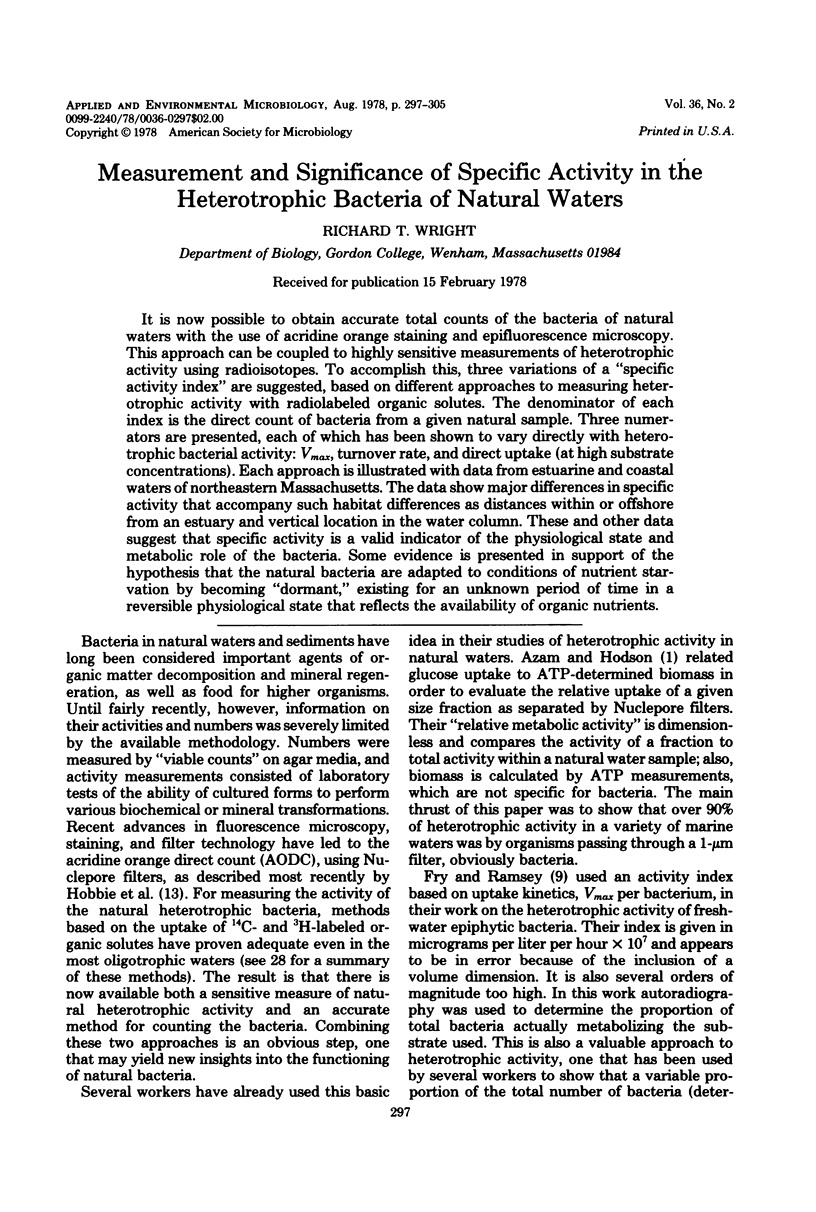
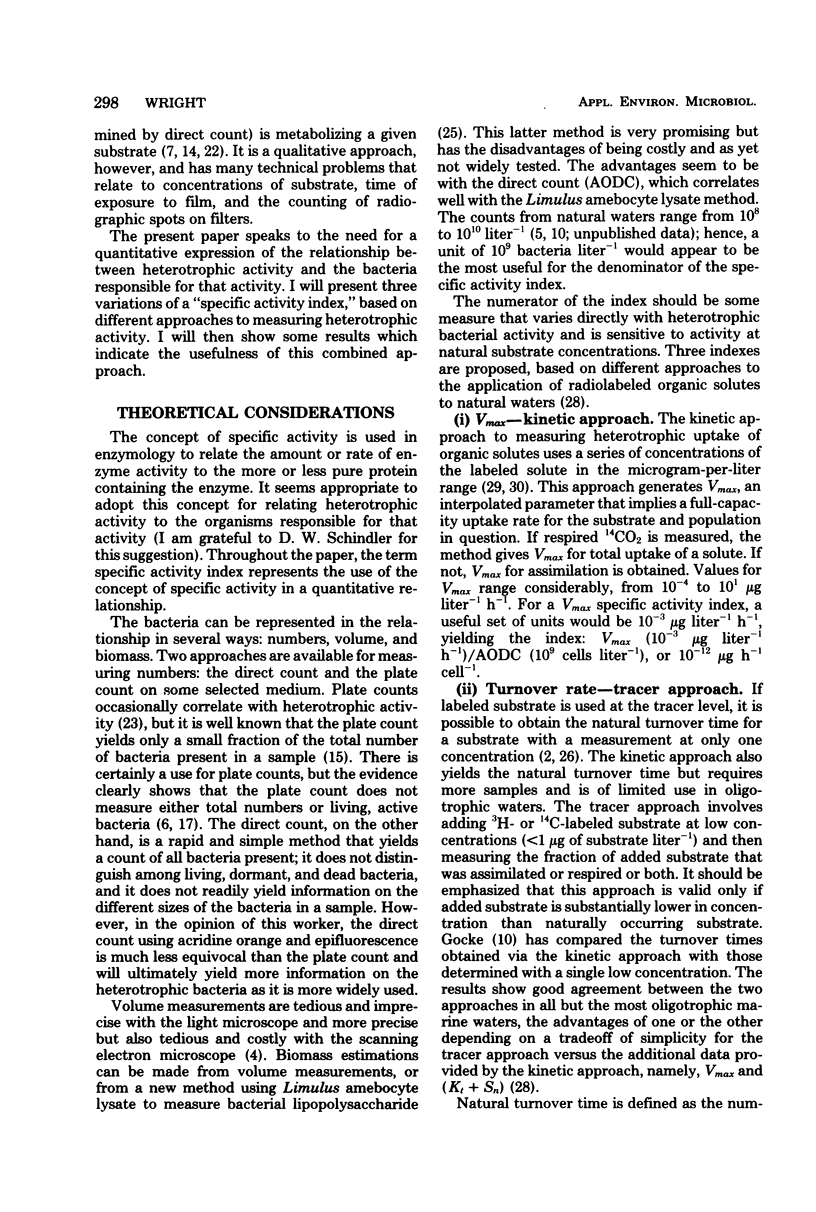
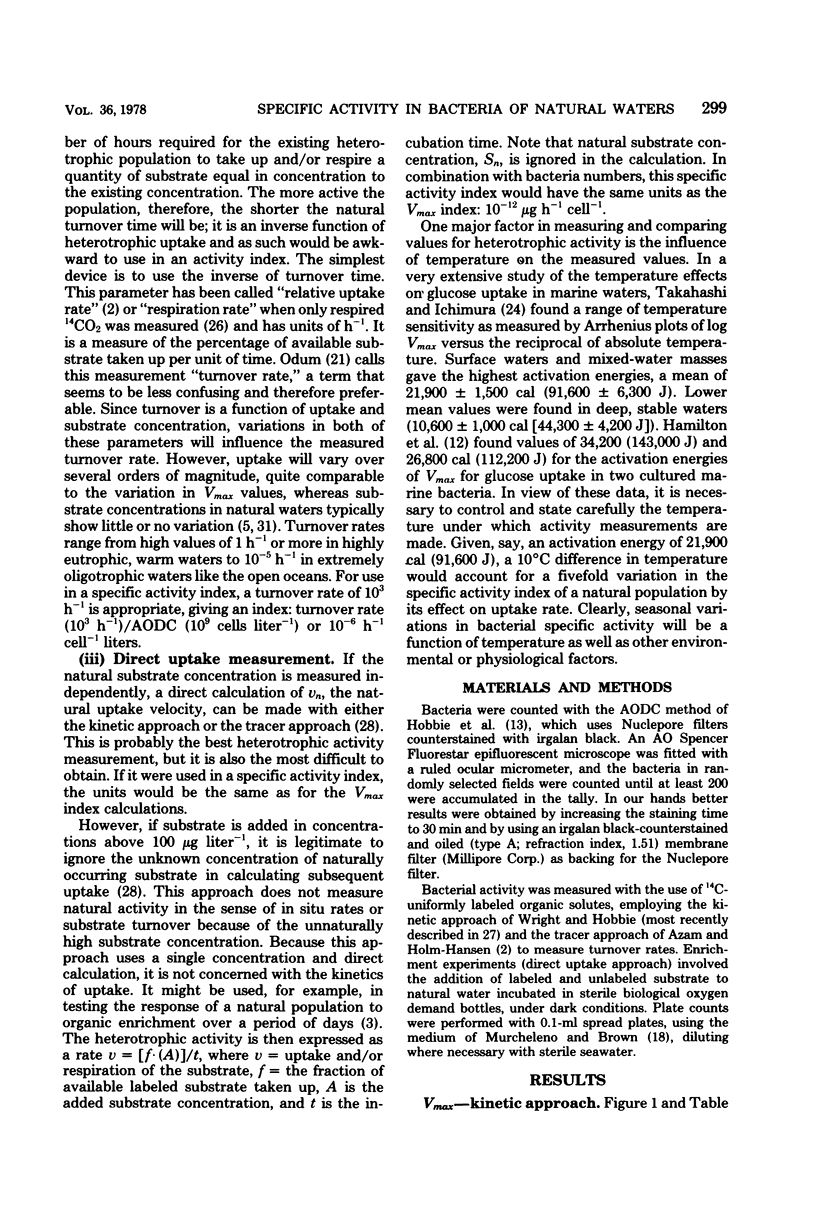
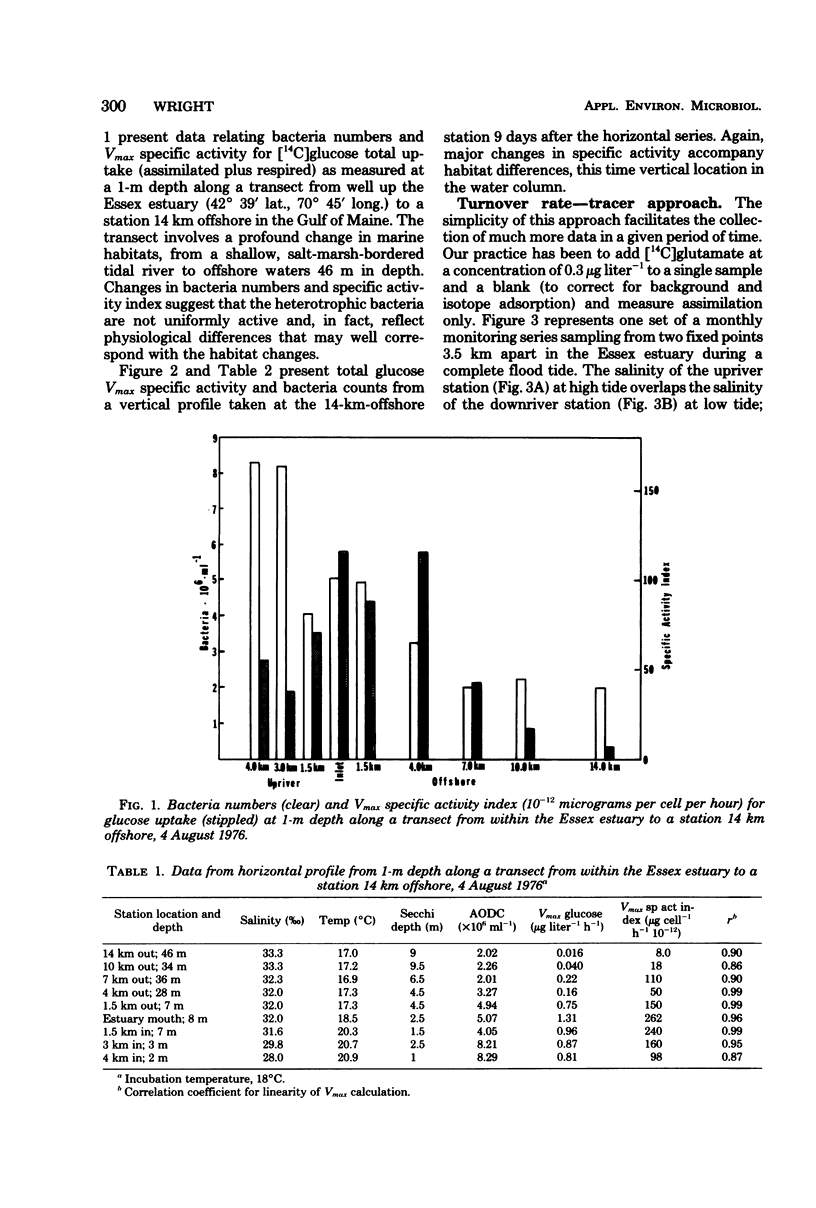
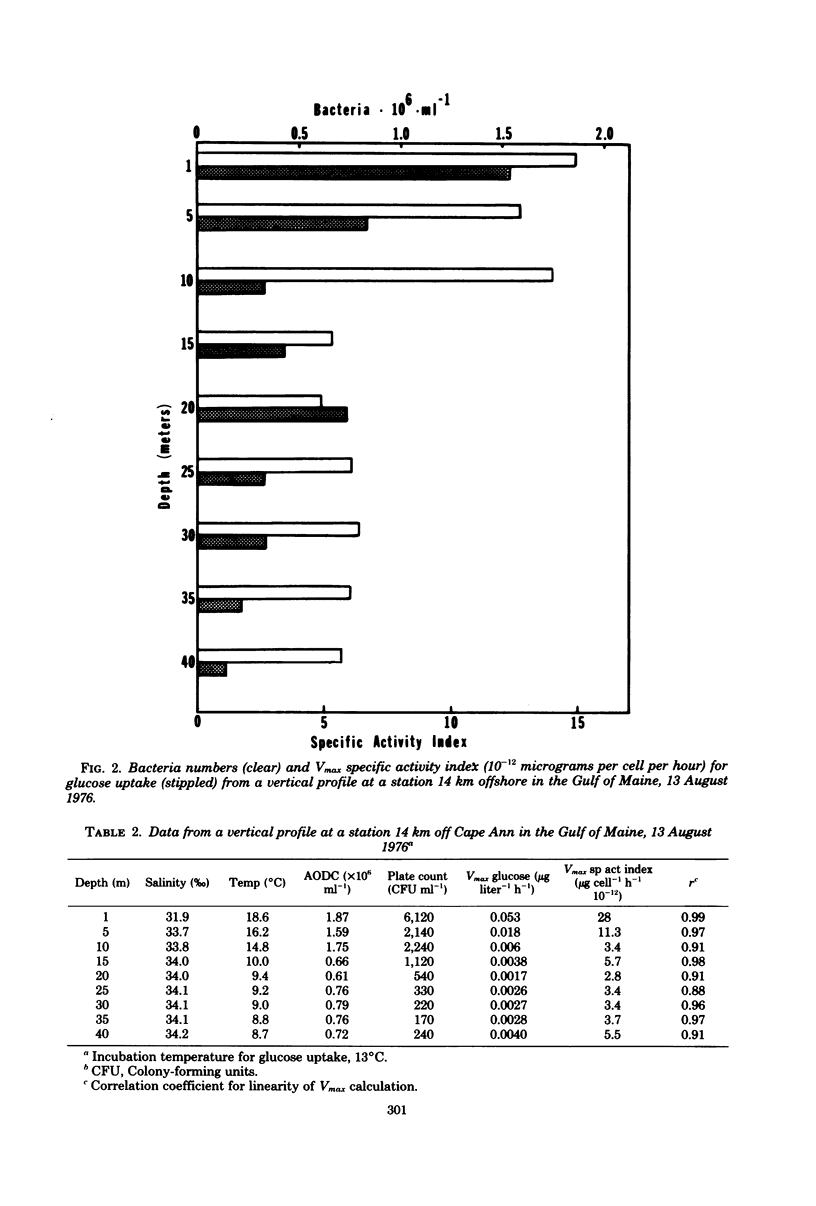
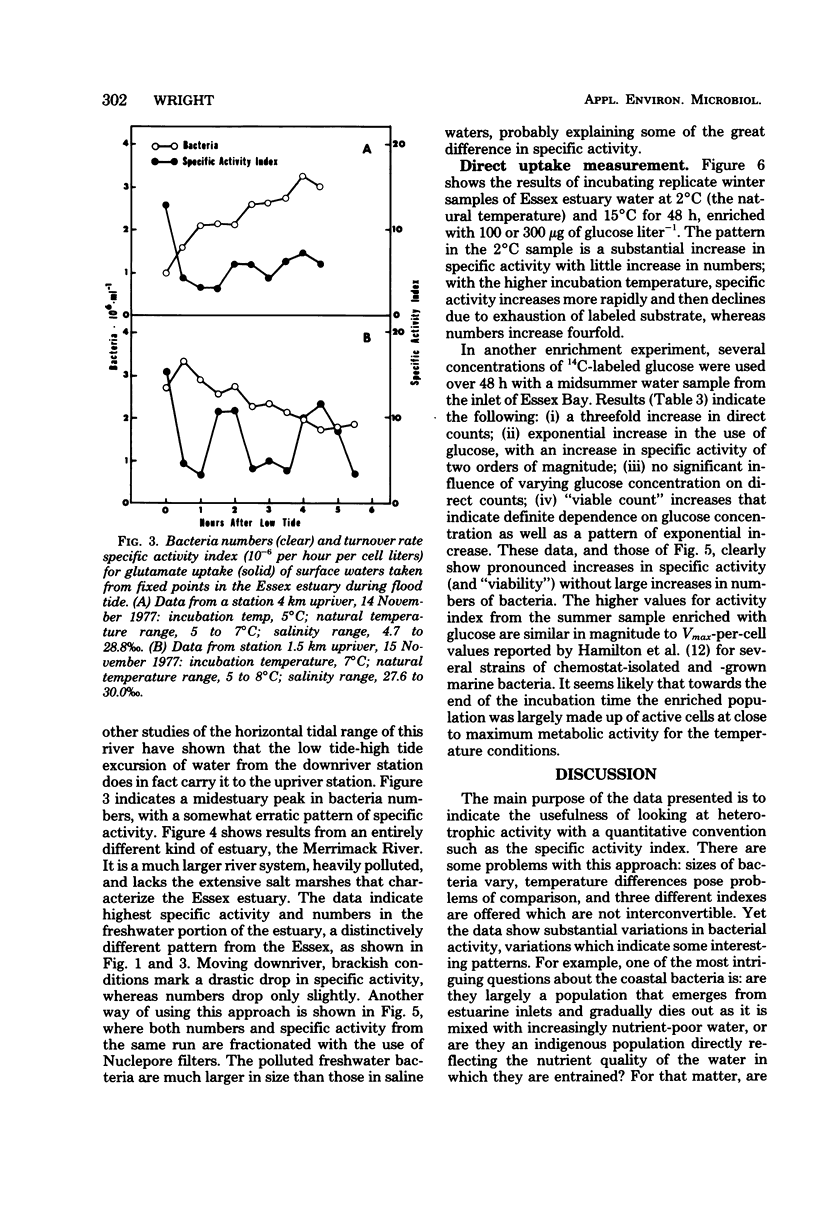
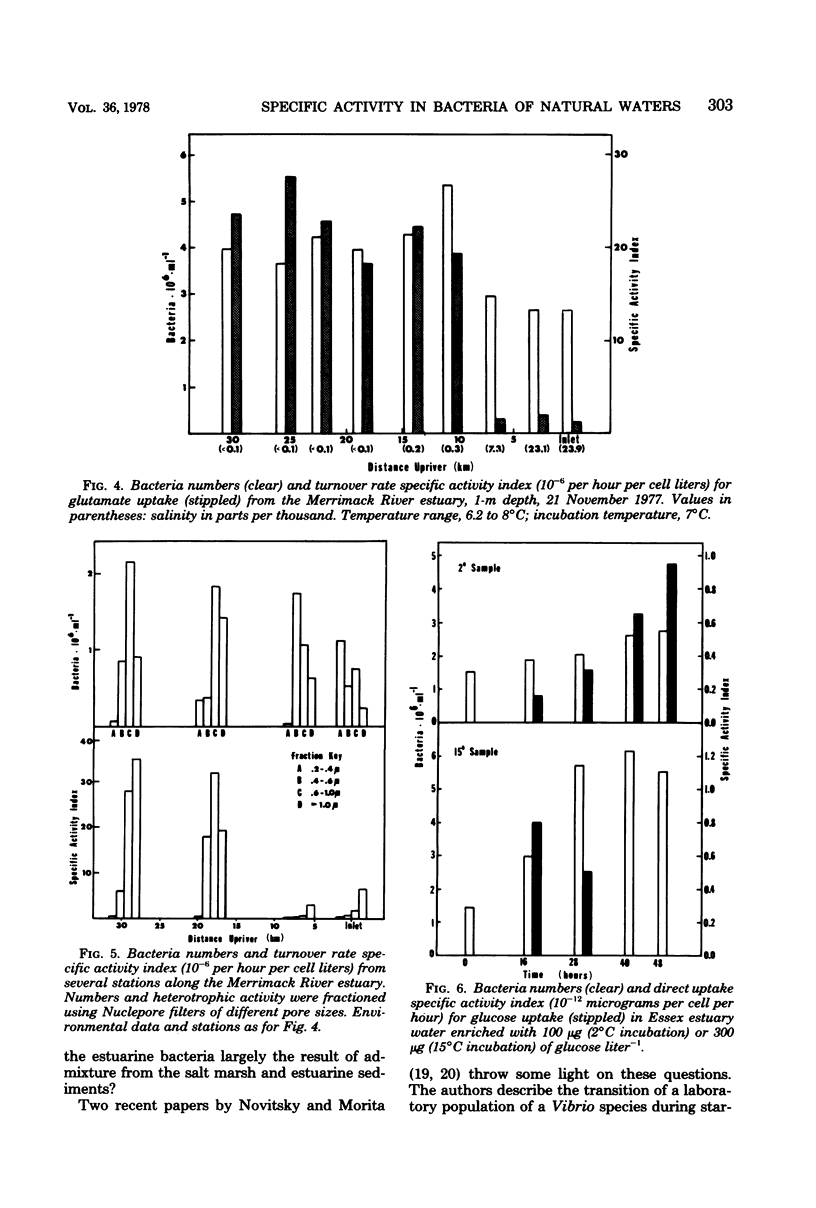
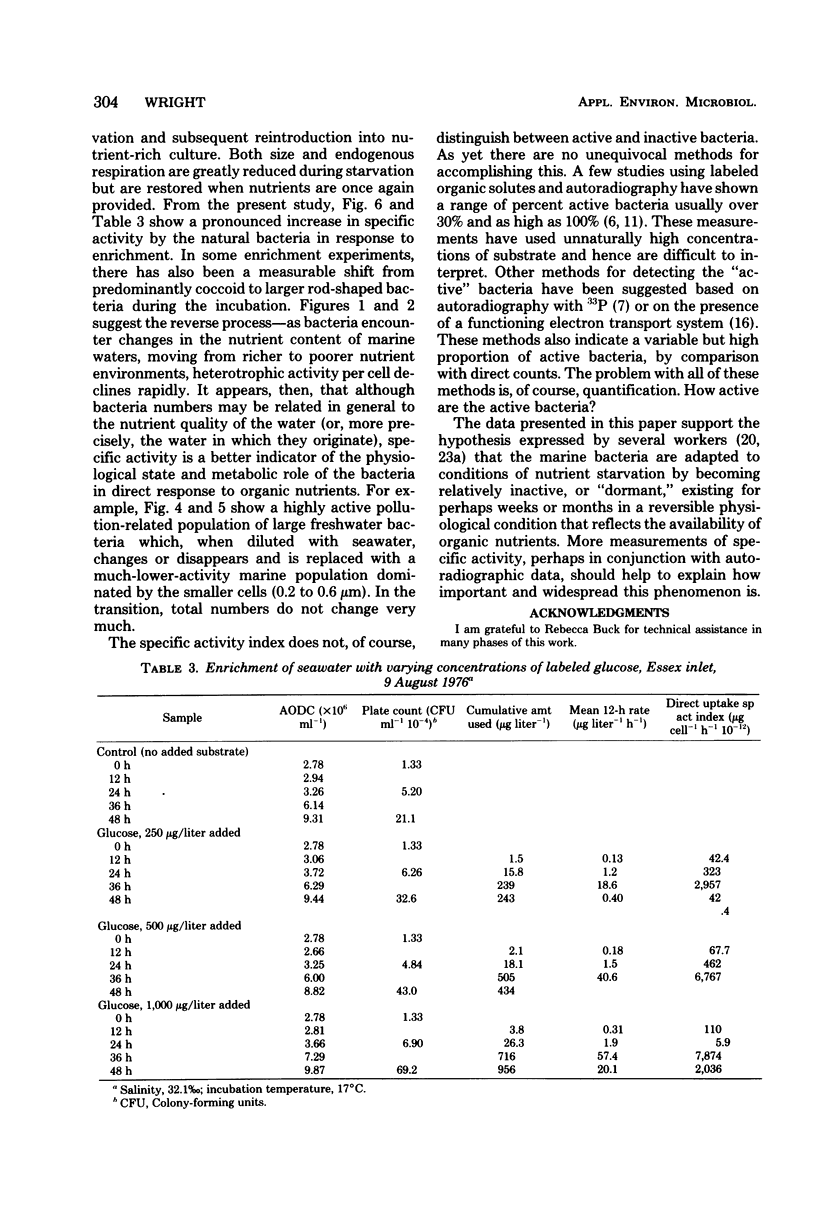
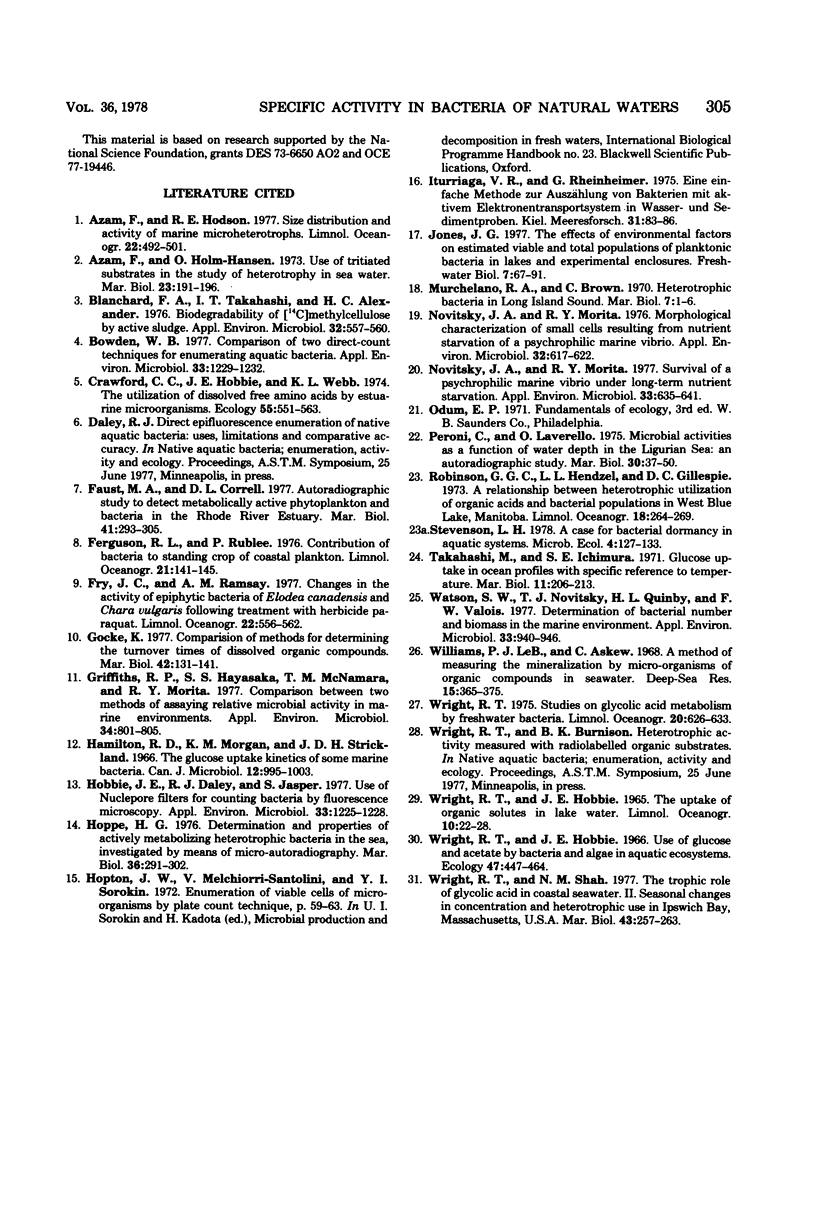
Selected References
These references are in PubMed. This may not be the complete list of references from this article.
- Blanchard F. A., Takahashi I. T., Alexander H. C. Biodegradability of [14C]methylcellulose by activated sludge. Appl Environ Microbiol. 1976 Oct;32(4):557–560. doi: 10.1128/aem.32.4.557-560.1976. [DOI] [PMC free article] [PubMed] [Google Scholar]
- Bowden W. B. Comparison of two direct-count techniques for enumerating aquatic bacteria. Appl Environ Microbiol. 1977 May;33(5):1229–1232. doi: 10.1128/aem.33.5.1229-1232.1977. [DOI] [PMC free article] [PubMed] [Google Scholar]
- Griffiths R. P., Hayasaka S. S., McNamara T. M., Morita R. Y. Comparison between two methods of assaying relative microbial activity in marine environments. Appl Environ Microbiol. 1977 Dec;34(6):801–805. doi: 10.1128/aem.34.6.801-805.1977. [DOI] [PMC free article] [PubMed] [Google Scholar]
- Hamilton R. D., Morgan K. M., Strickland J. D. The glucose uptake kinetics of some marine bacteria. Can J Microbiol. 1966 Oct;12(5):995–1003. doi: 10.1139/m66-134. [DOI] [PubMed] [Google Scholar]
- Hobbie J. E., Daley R. J., Jasper S. Use of nuclepore filters for counting bacteria by fluorescence microscopy. Appl Environ Microbiol. 1977 May;33(5):1225–1228. doi: 10.1128/aem.33.5.1225-1228.1977. [DOI] [PMC free article] [PubMed] [Google Scholar]
- Novitsky J. A., Morita R. Y. Morphological characterization of small cells resulting from nutrient starvation of a psychrophilic marine vibrio. Appl Environ Microbiol. 1976 Oct;32(4):617–622. doi: 10.1128/aem.32.4.617-622.1976. [DOI] [PMC free article] [PubMed] [Google Scholar]
- Novitsky J. A., Morita R. Y. Survival of a psychrophilic marine Vibrio under long-term nutrient starvation. Appl Environ Microbiol. 1977 Mar;33(3):635–641. doi: 10.1128/aem.33.3.635-641.1977. [DOI] [PMC free article] [PubMed] [Google Scholar]
- Watson S. W., Novitsky T. J., Quinby H. L., Valois F. W. Determination of bacterial number and biomass in the marine environment. Appl Environ Microbiol. 1977 Apr;33(4):940–946. doi: 10.1128/aem.33.4.940-946.1977. [DOI] [PMC free article] [PubMed] [Google Scholar]


